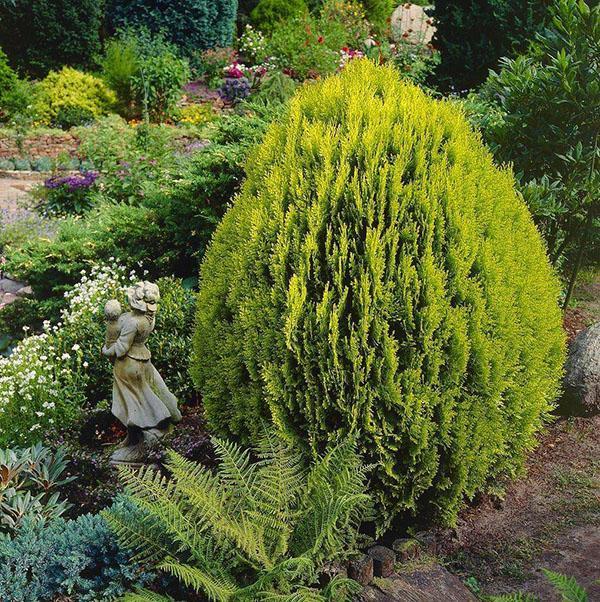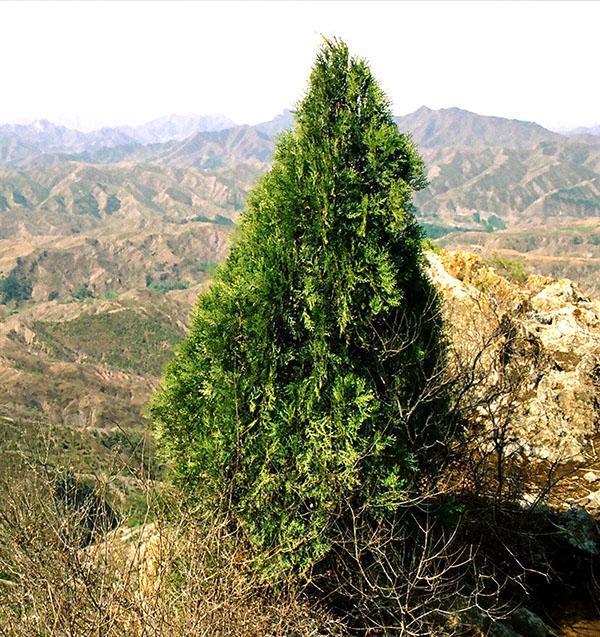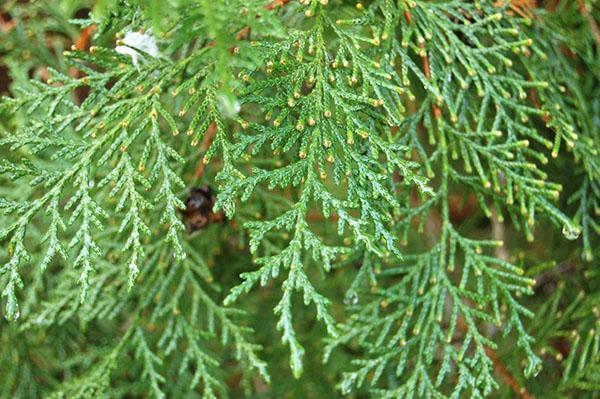Description of the decorative culture of Biota or eastern thuja
 Due to the popularity of conifers, the number of cultivated varieties of thuja today is in the tens and hundreds. More often, western thuja is grown on plots, but eastern thuja deserves no less attention.
Due to the popularity of conifers, the number of cultivated varieties of thuja today is in the tens and hundreds. More often, western thuja is grown on plots, but eastern thuja deserves no less attention.
Until recently, plants with this name constituted a common genus with thujas, but due to a number of differences in structure, growth and reproduction conditions, they were allocated to a new community consisting of one species of thuja, or rather the oriental biota or Biota orientalis.
Biota or eastern thuja: description of the species

The homeland of the plant is China and other Asian regions, where biota grows in the form of large shrubs, and sometimes trees with a rather wide crown. Adult specimens, capable of living in the wild for several hundred years, reach a height of 18, and their diameter reaches 12 meters.
The peculiarity of the eastern thuja is flat shoots with numerous branching, covered with needles. On the trunk, the branches are located radially and upward, therefore, from the side they give the impression of thin living plates.
 Green, scaly needles in length do not exceed 1.5 millimeters, densely cover the shoots, the ends of which are crowned with cones, unlike those that ripen on the western thuja. As you can see in the photo, the eastern thuja is decorated with green-bluish horned cones up to 15 mm long, which by the time of ripening become brownish-red, dry up and open in mid-autumn, freeing the seeds.
Green, scaly needles in length do not exceed 1.5 millimeters, densely cover the shoots, the ends of which are crowned with cones, unlike those that ripen on the western thuja. As you can see in the photo, the eastern thuja is decorated with green-bluish horned cones up to 15 mm long, which by the time of ripening become brownish-red, dry up and open in mid-autumn, freeing the seeds.
 The green needles of the biota with a matte bloom turn brownish-brown in winter, but do not die. Their life lasts from 3 to 5 years, after which the needles fall off, exposing light shoots.
The green needles of the biota with a matte bloom turn brownish-brown in winter, but do not die. Their life lasts from 3 to 5 years, after which the needles fall off, exposing light shoots.
In culture, thuja oriental pyramidal forms are most often used. There are many varieties of this plant, differing in the shade of the needles and the size of the bush.
Planting biota, thuja eastern and caring for ephedra
 Compared to the western thuja, its eastern congener is more thermophilic. In central Russia, the culture seriously freezes or completely dies, and if it survives, it loses its crown density and darkens.
Compared to the western thuja, its eastern congener is more thermophilic. In central Russia, the culture seriously freezes or completely dies, and if it survives, it loses its crown density and darkens.
In the southern regions, for example, on the Black Sea coast and in the Crimea, the plant feels great, reaches a significant size, pleases with a fluffy crown and excellent decorative effect.
Fans of coniferous crops who want to decorate the site with eastern thuja can plant a shrub in a container. In this case, the biota will grow in the open air in summer, and in the winter the heat-loving beauty will have to be moved under the roof.
Like other cultures from the Cypress family, the flathead is photophilous, but it takes root in the shade. True, in this case, the crown turns out to be more rarefied, which worsens the perception of pyramidal varieties. And plants with decorative golden needles in the shade can turn completely green.
Planting and caring for eastern thuja will not burden even a novice gardener. The culture is undemanding to the composition of the soil and the presence of a large amount of organic matter in it. For cultivation of biota, cultivated sandy loam and loam are suitable. The soil should be loose enough for the active development of the root system and drained to exclude stagnation of water and decay of the underground part of the plant.
 Annual feeding is needed only for young specimens up to five years of age. At this time, drought-resistant shrubs are watered regularly, as the surface of the trunk circle dries up. After 6 years, the eastern biota is watered only in hot dry periods.
Annual feeding is needed only for young specimens up to five years of age. At this time, drought-resistant shrubs are watered regularly, as the surface of the trunk circle dries up. After 6 years, the eastern biota is watered only in hot dry periods.
Plants of this species are not afraid of transplanting. The deepening of the root collar for the thuja of the flattened is not destructive, as for the western thuja. The shrub will respond to such a gardener's mistake by forming new roots and shoots, becoming denser and receiving additional nutrition and support.
As follows from the description, the eastern thuja propagates by seeds, and by layering, and by cuttings. At the same time, the seedlings retain the features of varietal parent plants.
Common varieties of eastern thuja, biota
There are not so many varieties of eastern biota as that of its western neighbor, thuja. The existing varieties differ in size, crown shape and needle color. As a result of the lecture, individual hybrid plants received greater winter hardiness than species specimens, therefore they can grow north of their natural range.
 Popular varieties include thuja eastern Aurea Nana with a dense ovoid crown, reaching a height of 70–80 cm by the age of 10 years. ...
Popular varieties include thuja eastern Aurea Nana with a dense ovoid crown, reaching a height of 70–80 cm by the age of 10 years. ...
Depending on the variety, oriental thuja are used in landscape design as large tapeworms, part of group plantings, or the basis for creating a living decorative fence.